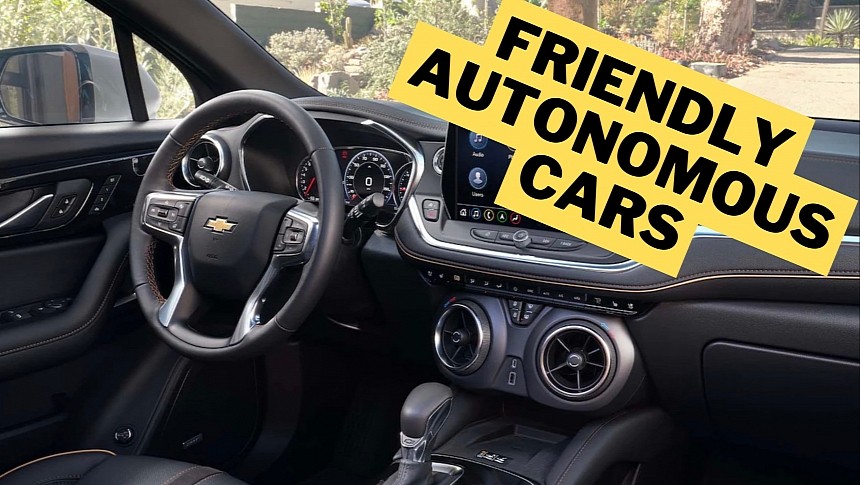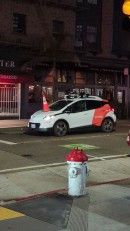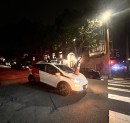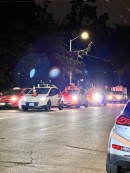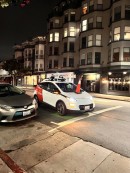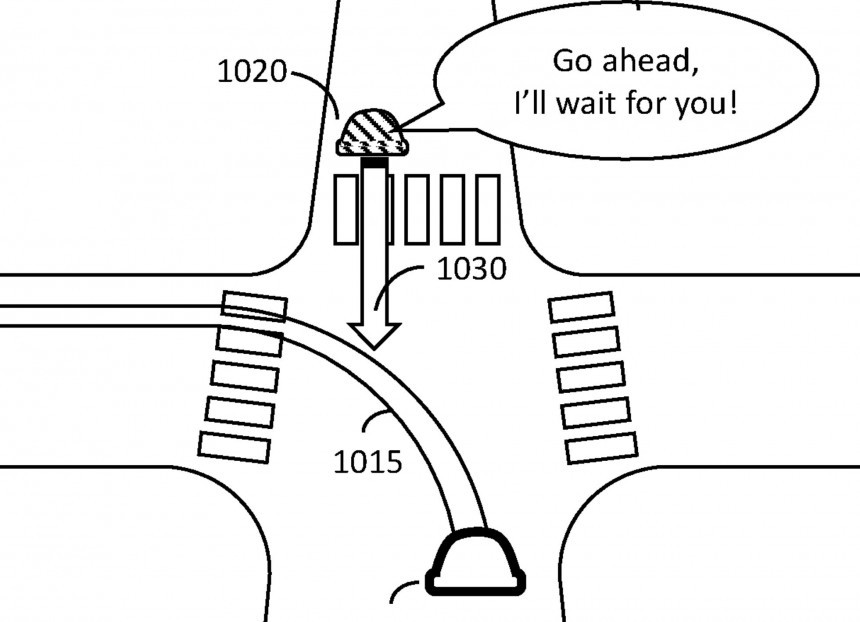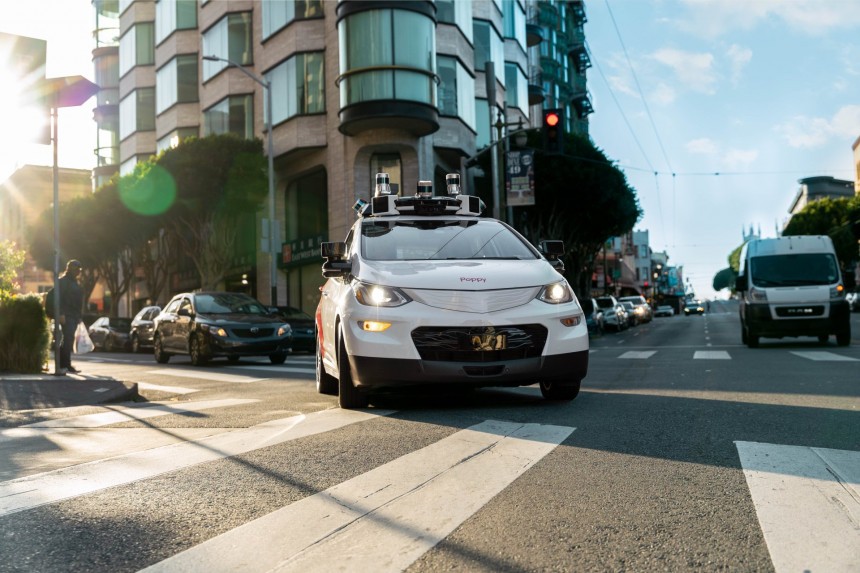Autonomous vehicles are the next big thing in the automotive industry, and it's certainly only a matter of time until we'll be surrounded by cars with no driver inside.
While carmakers are working around the clock on training their autonomous vehicles to drive safely, they are also investing big in teaching them to behave.
In other words, autonomous vehicles must respect the unspoken and official rules.
As human beings, drivers communicate with each other using different methods. Hand gestures are fairly common behind the wheel (not that gesture, though), such as raising the hand to say thank you, and autonomous vehicles lack the human factor not only to use them but also to understand them.
General Motors has found a way to make autonomous vehicles more human when surrounded by vehicles with "classic" drivers.
A patent called "notifications from an autonomous vehicle to a driver" describes a way to allow self-driving cars to communicate with the other motorists on the road more traditionally (but using a new-generation method). General Motors says autonomous vehicles can give the right-of-way, but because the other driver can't see a hand signal (as in the case of a human being behind the wheel), the whole thing would be a waste of time.
The carmaker believes notifications are the solution to this big dilemma.
The company says an autonomous vehicle can send a notification to the infotainment screen or even to the smartphone, letting the other driver know of its path and intention.
Understanding how this technology could work might be a little difficult, but here's a simple scenario.
A self-driving car approaches an intersection simultaneously as a conventional vehicle from the opposite direction. The human driver wants to turn left, so they slow down to let the autonomous vehicle pass. At this point, you can already notice the first major shortcoming: self-driving cars are unpredictable, so aside from the turning signals, they can't communicate with the other motorists.
The human driver, therefore, slows down, assuming the AV would continue its travel. This is the point where General Motors says a decision logic is triggered.
The self-driving car can conduct a quick analysis (using onboard hardware, such as cameras and sensors) to anticipate what other drivers want to do and how their intentions would impact its travel. For instance, in one scenario, the vehicle can determine that by simply decelerating or maintaining speed, the human driver would have enough time to turn left without impacting its journey.
We can now proceed to the next shortcoming. The autonomous vehicle wants to give the right of way to the other driver, but they can't let them know about it. A human driver would turn to a hand signal for the whole thing, but what should a "robot" do?
General Motors says the answer comes down to notifications. AVs and sport notification generation systems to send messages to the other vehicles on the road. The company explains that with the necessary technology, which involves plenty of high-tech stuff, AVs would be more human and communicate with nearby cars more efficiently.
Based on the above scenario, the AV can send a notification to the other driver's phone to let them know they can safely make a left turn. The messages support heavy customization, so eventually, AVs can be friendly, making the experience quite pleasant.
Certainly, having self-driving cars act more like human beings is good news for how these vehicles interact with the rest of the drivers. General Motors says the same technology can be used in AVs for delivery services.
For example, an AV can park in front of a shopping center, waiting for a store employee to load the groceries it must deliver to a customer across the town. While waiting for the store employee, another vehicle might approach, searching for a parking spot. The AV can send a notification to the driver, telling them they're waiting to pick up an order. Sometimes, it can also provide time estimates, so the driver would know when the parking spot would become available.
In theory, the same system can be expanded to various purposes, covering multiple scenarios where self-driving vehicles must communicate with nearby drivers. For instance, the same thing can take place in heavy traffic when the car could give the right of way to a vehicle coming from a secondary street. Notifications would allow the two vehicles to communicate efficiently, eventually improving traffic flow.
General Motors says the lack of communication can lead to major frustration on the road, so its technology is supposed to prevent this once AVs become mainstream. Sure enough, this idea is currently in the patent stage, and given it'd require special software on the driver's end, it'd probably take a lot of time to enter production (if this ever happens in the first place).
In other words, autonomous vehicles must respect the unspoken and official rules.
As human beings, drivers communicate with each other using different methods. Hand gestures are fairly common behind the wheel (not that gesture, though), such as raising the hand to say thank you, and autonomous vehicles lack the human factor not only to use them but also to understand them.
General Motors has found a way to make autonomous vehicles more human when surrounded by vehicles with "classic" drivers.
A patent called "notifications from an autonomous vehicle to a driver" describes a way to allow self-driving cars to communicate with the other motorists on the road more traditionally (but using a new-generation method). General Motors says autonomous vehicles can give the right-of-way, but because the other driver can't see a hand signal (as in the case of a human being behind the wheel), the whole thing would be a waste of time.
The carmaker believes notifications are the solution to this big dilemma.
The company says an autonomous vehicle can send a notification to the infotainment screen or even to the smartphone, letting the other driver know of its path and intention.
Understanding how this technology could work might be a little difficult, but here's a simple scenario.
A self-driving car approaches an intersection simultaneously as a conventional vehicle from the opposite direction. The human driver wants to turn left, so they slow down to let the autonomous vehicle pass. At this point, you can already notice the first major shortcoming: self-driving cars are unpredictable, so aside from the turning signals, they can't communicate with the other motorists.
The self-driving car can conduct a quick analysis (using onboard hardware, such as cameras and sensors) to anticipate what other drivers want to do and how their intentions would impact its travel. For instance, in one scenario, the vehicle can determine that by simply decelerating or maintaining speed, the human driver would have enough time to turn left without impacting its journey.
We can now proceed to the next shortcoming. The autonomous vehicle wants to give the right of way to the other driver, but they can't let them know about it. A human driver would turn to a hand signal for the whole thing, but what should a "robot" do?
General Motors says the answer comes down to notifications. AVs and sport notification generation systems to send messages to the other vehicles on the road. The company explains that with the necessary technology, which involves plenty of high-tech stuff, AVs would be more human and communicate with nearby cars more efficiently.
Based on the above scenario, the AV can send a notification to the other driver's phone to let them know they can safely make a left turn. The messages support heavy customization, so eventually, AVs can be friendly, making the experience quite pleasant.
Certainly, having self-driving cars act more like human beings is good news for how these vehicles interact with the rest of the drivers. General Motors says the same technology can be used in AVs for delivery services.
In theory, the same system can be expanded to various purposes, covering multiple scenarios where self-driving vehicles must communicate with nearby drivers. For instance, the same thing can take place in heavy traffic when the car could give the right of way to a vehicle coming from a secondary street. Notifications would allow the two vehicles to communicate efficiently, eventually improving traffic flow.
General Motors says the lack of communication can lead to major frustration on the road, so its technology is supposed to prevent this once AVs become mainstream. Sure enough, this idea is currently in the patent stage, and given it'd require special software on the driver's end, it'd probably take a lot of time to enter production (if this ever happens in the first place).
